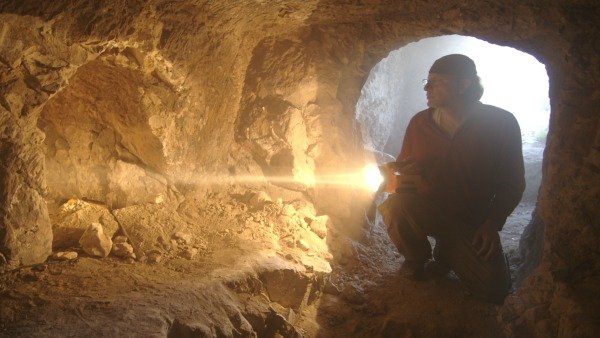
A new book, “The Jesus Discovery: The New Archaeological Find That Reveals the Birth of Christianity,” published this week, reveals that archeologists and authors have literally “unearthed” new information which may provide an unprecedented glimpse into Christianity’s earliest days.
In a “nearly intact” first-century tomb located below a modern condominium building in Jerusalem, a team of archeologists led by Simcha Jacobovici has found ossuaries bearing engravings that could be the earliest evidence of Christian iconography in Jerusalem.
The tomb has been dated to before A.D. 70, so if its engravings are indeed early Christian, they were most likely made by some of Jesus’ earliest followers, according to the excavators.
One of the limestone ossuaries bears an inscription in Greek that includes a reference to “Divine Jehovah raising someone up”, the earliest archeological evidence of “faith in Jesus’ resurrection from the dead.”
A second ossuary has an image that appears to be a large fish with a stick figure in its mouth. The excavators believe the image represents the story of Jonah, the biblical prophet who was swallowed by a fish or whale and then released.
“If anyone had claimed to find either a statement about resurrection or a Jonah image in a Jewish tomb of this period I would have said impossible – until now,” James D. Tabor, professor and chairman of religious studies at the University of North Carolina at Charlotte and one of the excavators, said in a news release issued by the university.

The excavators acknowledge the discovery and their interpretation are likely to be controversial.
This tomb was originally uncovered in 1981, but the original excavators were forced to leave by Orthodox Jewish groups who oppose the excavation of Jewish tombs.
The tomb was then resealed and buried beneath the condominium complex in the neighborhood of East Talpiot.
Almost two decades later, James D. Tabor and colleagues got a license to go back into the tomb; however, because of the condos on top of it and the threat of protests from Orthodox Jewish groups, they took an unconventional route into the tomb.
They inserted a robotic arm, developed for this project, carrying high-definition cameras, through holes drilled in the basement floor of the building. The cameras photographed the ossuaries inside from all sides.
This tomb is located adjacent to another one, uncovered in 1980, that contained ossuaries with names some have associated with Jesus and his family. That tomb was thoroughly excavated at the time.
Later this spring, a documentary on the subject will air on the Discovery Channel.
[youtube dJ9zEW4xyZg]